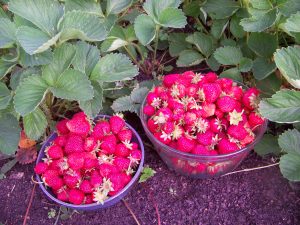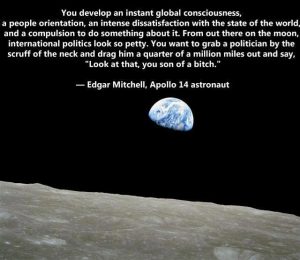“The rush and pressure of modern life are a form, perhaps the most common form, of its innate violence. To allow oneself to be carried away by a multitude of conflicting concerns, to surrender to too many demands, to commit oneself to too many projects, to want to help everyone in everything is to succumb to violence. More than that, it is cooperation in violence. The frenzy of the activist…destroys his own inner capacity for peace. It destroys the fruitfulness of his own work, because it kills the root of inner wisdom which makes work fruitful.” — Thomas Merton
Only this evening, at the end of a dear girl’s high-school graduation party and a weekend of hard but happy garden work and a week that included turning in all my final grades and going to my first rock show in some time, did it hit me: I am on sabbatical now. For the next six months. For real. I can pause my headlong, driven, if-I-don’t-push-myself-it-won’t-get-done forward, so-much-to-worry-about momentum, which has become so deeply ingrained that turning it off and relaxing has become more and more of a conscious effort. I can let myself do one thing at a time, according to my own goals and plans and agenda. Because of course I’ve got plans: the official sabbatical proposal promised completing the two nonfiction books that now exist in about 75 pages of draft material each. And of course, there are more: individual essays, stories, and images that I am realizing want to be not just one but two more novels. There’s a semi-professional, semi-personal trip to Europe with my mom. There’s a faculty seminar on the East Coast. And for the first time ever, I have been invited to give a reading and lead a workshop at a writers’ conference. Big hopes. Hoops in bright colors spinning in the air.
But the spirit in which I’ll go about all this, I realize as I walk around my garden on a hot late-spring evening, is going to be very different. A fun day in the city and the music of one of my favorite singers EVER — live, for the third time I’ve seen him — and a few days of fingers in dirt and three yoga classes in one week instead of just one have unhooked the frantic forward pistons of the brain and reoriented me toward the sources of strength and quiet and health that have been here all along.
Like the strawberry patch.
“The contemplative life should liberate and purify the imagination which passively absorbs all kinds of things without our realizing it; liberate and purify it from the influence of so much violence done by the bombardment of social images…. The training of the imagination implies a certain freedom and this freedom implies a certain capacity to choose and to find its own appropriate nourishment. Thus in the interior life there should be moments of relaxation, freedom, and “browsing.” Perhaps the best way to do this is in the midst of nature, but also in literature. Perhaps also a certain amount of art is necessary and music.” – Thomas Merton
And strawberries. Preferably the quirky, knobby, sweet single-bearing ones that have grown, like some loaves-and-fishes miracle, from two little runners a friend gave me when I moved here six years ago. Six years? Hard to believe. But it must be. Because look how thick these berries are now. Spread into a second patch in another garden bed, even. And yielding, once a year, small gems that will make your heart quiver in your chest with pure delight. Hard not to stand in the patch, feet planted carefully in the bare spots, and eat them one after another until they’re all gone. Luckily there are enough of them now to make that difficult, and to make it fun to pick alongside a child, naming the shapes you find: one memorable year, we found at least three shaped like what we decided was a teddy bear, another that looked like a cat.


Why I garden, why I harvest and eat: time relaxes and slows and I can calm down. Just calm down. Still a lot to do but it’ll get done. Calm down.
Last night after gardening I read one great book and started another: Kristin Kimball’s THE DIRTY LIFE (she and her husband farm with horses, which is bad-ass, and she is a great writer, doubly bad-ass) and Bill McKibben’s EAARTH. (Bill McKibben is a modest, visionary Methodist bad-ass.) EAARTH lays out what by now is just plain fact: human beings have changed our planet in ways that have altered the nature of life on it and what will be possible for us in the future, and we have to figure out how we are going to live on what is now less what we think of as our familiar “earth” than some altered, stretched-sideways version of its former self, “eaarth.” Kimball describes a way of life that — I know because I have experienced it too — can connect you with a sense of purpose so deep and a daily roster of tasks so totalizing and absorbing, stripping away energy-draining nonessentials that seem so vital in the sub/urban lifestyles that have made Eaarth what it is, that you can look up from it and wonder, honestly, “why doesn’t everybody understand that this is the way to treat the land, to eat, to grow on and from it? why would people ever live differently?” This is activism, too, the doing and the living-out of the right way to do things, hour by hour and week by week. It too is subject to violence, it too to renewal. It too is a way to save this Earth, this Eaarth, which sometimes we need such radical reminders of how to see.

From this grows my sabbatical-mind question, too, which is really the great question of life after all: with so much abundance and peace always available to us, why is it so hard to just reach for it and have it and exist within it, being content, letting that contentment fuel good forward work? Those strawberries have been hanging quietly on their vines for a couple days now, ready. I almost, in my rush to plant new Asian greens and snapdragons and lilies that will be as tall as me (look at all the beautiful things I will have, have, have!!), forgot they were there. Isn’t this a kind of violence, too, although harder to recognize – rushing, pressing, driving forward out of what Buddhist traditions would call a fear of our own infinite natures, a fear of the limitless possibilities of connection with the patient, breathing, multifarious reality that is always everywhere, waiting for us to come to it? It’s always there. We’re the ones who move.
So the time is here to let myself be in place, and stop driving forward so hard and so breathlessly, because the writing and all my other work visible and invisible will be done – and done better – without that. There will be time for a thousand visions and revisions – and time to lie in the grass, a song rambling through my head, looking up at the softening, swallow-cut evening sky that is always, always there.

Love the searching for shapes among the strawberries like you would clouds–such a lovely image. “Softening, swallow-cut sky” –sounds like a lyric from a lovely folk song. I have checked out “The Dirty Life” so many times from the library to reread that I think I need to just purchase it, such a wonderful book. And how interesting it is to think about how much we have teach ourselves to slow down, to be content–to get that balance of good hard work and good hard enjoyment of the work we have done!
Doing and being are so often at odds! Maybe it speaks directly to the question of what exactly is ‘enough’? So many of us have been taught to speak through the material, when in reality the small voice within is waiting to be heard. Nice piece ‘peace’ Amy!
Thank you so much. I’m continuing to work on this – which really all of us are, aren’t we? 🙂 A
Such a beautiful piece! Strawberries, Merton, and a sabbatical plans. I am chanting “just calm down” to myself now 🙂